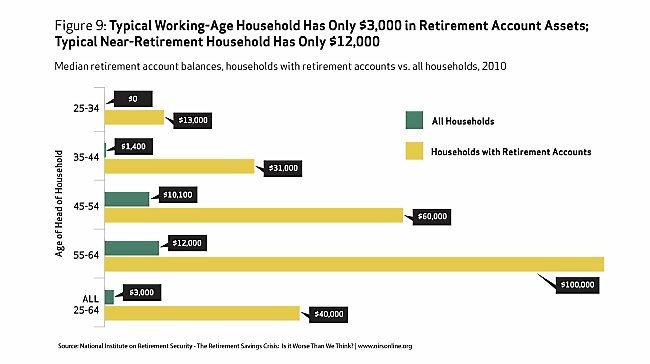Do You Have Too Many Retirement Accounts
Post on: 26 Апрель, 2015 No Comment

Over the years, you have likely acquired a number of retirement accounts. Now may be the time to streamline your holdings.
Consider all of your choices
- Leave the assets in your former employer plan You can roll over the assets into a traditional IRA You can roll the assets into a Roth IRA or Roth 401(k) You can roll the assets into another employer plan (if the plan allows) You can take a lump sum distribution (where penalties may apply)
Each choice may offer different investment options and services, fees and expenses, withdrawal options, required minimum distributions, tax treatment, and provide different protection from creditors and legal judgments. These are complex choices and should be considered with care.
Frequent job and career moves are part of the new American workplace. As a result, over the years a growing number of people have accumulated a disparate collection of 401(k)s, IRAs and SEP plans.
Whether through inertia or the belief that they’re diversifying their assets, many people leave this assortment of accounts untouched, sometimes for years. But while holding on to multiple retirement plans may offer the appearance of diversification, doing so can make it more difficult to determine whether your investments are working together to pursue your retirement goals. In addition to making your life simpler, having fewer accounts could make it much easier to help you determine whether your assets are working together as part of your retirement strategy.
More Flexibility to Consolidate your Accounts
Current regulations allow for consolidation between most types of retirement accounts. You may generally roll over retirement plan assets between different traditional and rollover IRAs and different employer plan types. The rules are more restrictive with a Roth 401(k), in which you contribute after-tax income but are able to withdraw money tax-free if certain requirements are met. It can only be rolled into another Roth 401(k) or a Roth IRA. For that reason, you may still be required to keep some of your retirement accounts separate — say, a 401(k) from your current employer (not yet eligible for distribution), a traditional or rollover IRA (holding assets from your accounts with prior employer plans) and a Roth IRA (holding any assets converted from your prior employer-sponsored retirement plan or a traditional IRA or rolled over from a Roth 401(k) account). Married couples should also remember that their retirement accounts can’t be combined, because jointly owned retirement accounts are not allowed.
Holding a variety of accounts often makes it harder to maintain a consistent asset allocation strategy that is aligned with your goals. It can also mean that these critical retirement assets may not reflect, as a whole, your preferred risk tolerance, targeted asset mix and investment horizon. This becomes even more important as part of a strategy design to help you to meet your income needs in retirement. Since you may need for your assets to satisfy multiple needs simultaneously as you transition into retirement (providing steady income, long term growth, tax efficiency, wealth transfer), coordinating across a broad range of accounts can be challenging. Consolidating some of these accounts could be an important first step in a process that will also involve suitable investment and cash-management strategies.
It’s worth remembering that neglected accounts often become unbalanced over time, because normal fluctuations in the relative value of equities and bonds often shift as holdings outperform or falter, altering your overall allocation. You may find that you’re overly exposed to risk, or that you’re not taking advantage of opportunities to buy low, says Debra Greenberg, Director, IRA Program Management. Unless it has been recently rebalanced, that 401(k) from a job you left eight years ago may no longer reflect your personal goals and risk tolerance.














